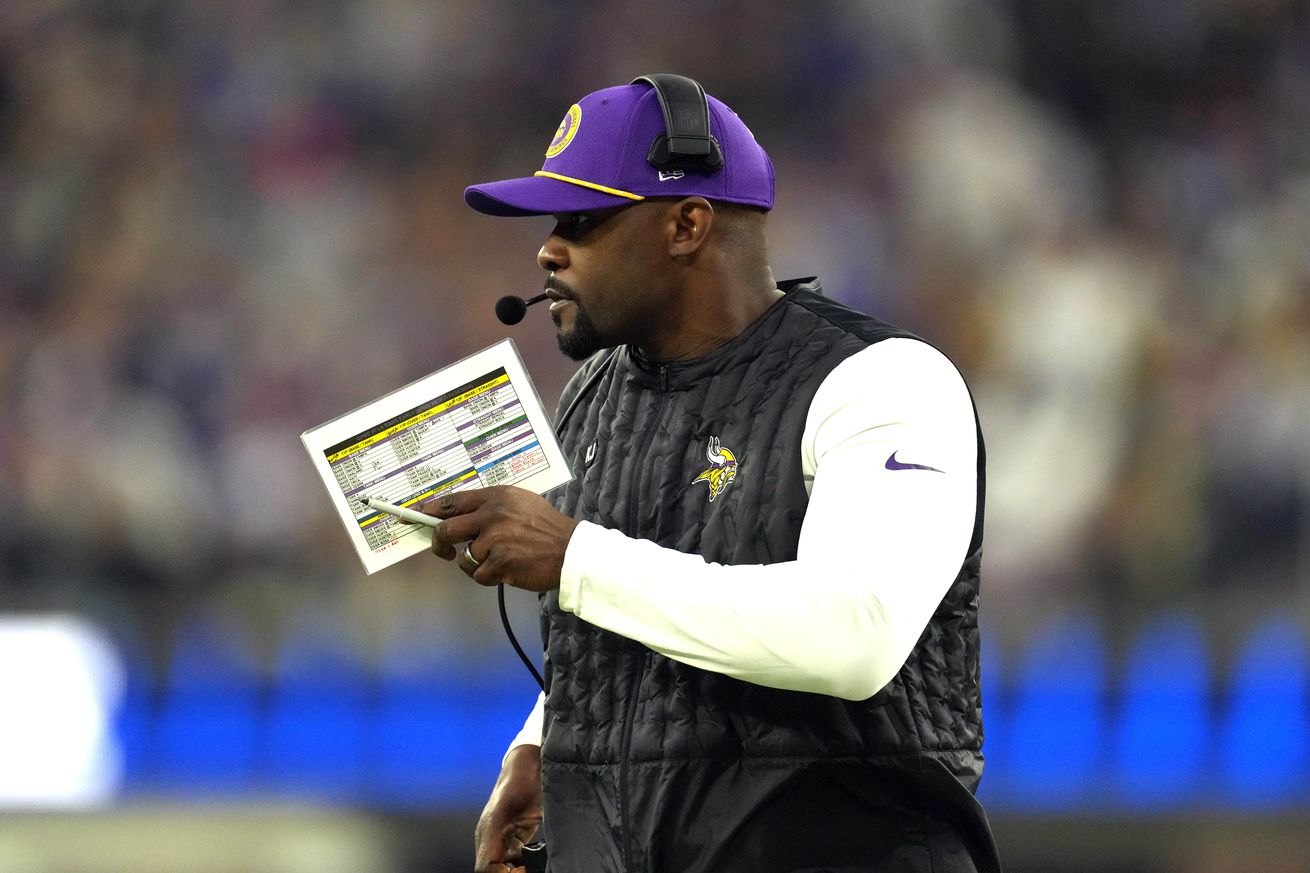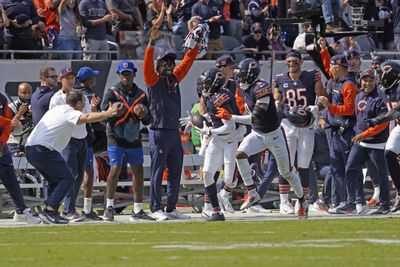
In our second installment, we’ll take a deeper dive into the NFC North’s defenses. Last year was a mixed bag, but in the end, there was plenty to like. With all four teams projected to have quality offenses, the team with the best defense could end up as the division winner.
In our second installment of ranking the NFC North’s best units, we’ll switch over to the defensive side of the ball. Like the first installment, the primary coaching changes came from the Chicago Bears and Detroit Lions. Each team within the division made their fair share of moves, but none of these units stand out as elite, as you’ll see in the rankings.
With all four teams projecting to have Top 15 offenses, the best defense(s) could make the difference in who wins the division this season. Who has the best chance to field a Top 10 defense in 2025? We’ll dive into each position group and give our thoughts on how we see things heading into the 2025 regular season.
Defensive Line
In typical Brian Flores fashion, the Vikings will boast one of the more stacked defensive lines across the league in 2025. Just one year after spending three high-value resources on the edge, they decided to approach the interior in a similar manner. If Dallas Turner can make a big leap in Year 2, this might be football’s deepest and nastiest front four. Assuming they can stop the run, of course.
2. Detroit Lions
These last three spots get tricky. Aiden Hutchinson is one of the better young edge rushers in the league. Adding first-rounder Tyleik Williams to an interior featuring D.J. Reader, Alim McNeil, Levi Onwuzurike, and Roy Lopez gives them unreal depth at tackle. Edge rusher is the best question mark on their entire roster, but something tells me they’ll find a way to add a partner in crime for Hutchinson before the start of Week 1. The interior depth and star power at DE1 wins them the second spot.
The Packers have some name value on their defensive line, but they don’t have a player that I would rate as anywhere near elite. At one point, it looked like Rashan Gary would become that type of player, but he has since tailed off. Kenny Clark is a good player, but he will turn 30 during the season. Devonte Wyatt has turned into an excellent pass rusher on the interior, but has struggled mightily against the run. Green Bay is still awaiting a return on investment from Lukas Van Ness, who was taken with the 13th overall pick in the 2023 draft. There’s talent here, and maybe Year 2 in Jeff Hafley’s defense will return better results, but as of now, this group needs to prove it.
4. Chicago Bears
Credit where credit is due for the Bears. In recent memory, this was the first offseason where they didn’t completely ignore one side of the ball. Despite sinking many high-value resources on the offensive side of the ball, new defensive coordinator Dennis Allen still got a pair of free agents in Dayo Odeyingbo and Grady Jarrett, plus their final second-round pick, Shemar Turner. The interior of the defensive line looks much improved, but the depth outside of Montez Sweat and Odeyingbo on the edge is worrisome. Similar to Detroit, this unit could use another addition before the start of Week 1.
Linebacker
1. Detroit Lions
Looking back at the Lions’ 2023 draft class, general manager Brad Holmes’ bold moves in the first round appear to have paid off. You could argue that his first four picks that season were franchise-changing. Jack Campbell, one of the more exciting linebackers in the league going into his third year, is at the forefront of the defensive players. Alex Anzalone has been a nice veteran in the middle of the defense, and Derrick Barnes has done a good job rounding this group out. For my money, the Lions have the most well-rounded group of linebackers in the division, even if none of them are stars. That goes a long way in a division that doesn’t have many standouts at the position.
2. Green Bay Packers
The Packers’ recent investments at the linebacker position are not going unnoticed here. Quay Walker, Edgerrin Cooper, and Ty’Ron Hopper are all recent high-round draft picks added to the mix. Walker hasn’t lived up to most pre-draft evaluations, but the talent is there if he can put it all together. Cooper burst onto the scene as a rookie last year and looked great. Hopper played sparingly in Year 1, but could see a bigger role in 2025. Isaiah McDuffie is a solid player who returns to Green Bay after testing the free agent market. This is not a murderer’s row of linebackers but a deep group with a quality ceiling.
3. Minnesota Vikings
Ivan Pace Jr. and Blake Cashman have become quite the duo in Minnesota under Flores. On top of having one of the better pass rushes in the league, they have two athletic linebackers who can fly around the field and make plays. It helps that one of them was acquired as an undrafted free agent. The depth behind those two isn’t great, primarily due to players like Brian Asamoah not panning out as expected as a mid-round pick. With better depth, they’d be higher on the list.
4. Chicago Bears
It’s never a great sign when a team with the most invested at the linebacker position isn’t a comfortable No. 1 on the list. Three years ago, general manager Ryan Poles (at the request of former head coach Matt Eberflus) spent a combined $24.5 million annually on Tremaine Edmunds and T.J. Edwards. Edwards outperformed his first three-year deal, but Edmunds hasn’t come close to living up to his. With Jack Sanborn now in Dallas, this group lacks top-end talent, is expensive, and has virtually no depth. Barring a surprise, this will likely be Edmunds’ last year in Chicago.

David Banks-Imagn Images
Cornerback
1. Chicago Bears
Chicago’s collection of quality cornerbacks continued during the offseason. All three starters are returning, including Kyler Gordon’s shiny new three-year extension that ties him to the team through 2027. This group’s most significant question is whether third-year cornerback Tyrique Stevenson can bounce back after a less-than-ideal sophomore season. The good news is they have plenty of depth, including Terell Smith. This is one of the deeper groups in the entire league and will now be under the guidance of defensive back guru Dennis Allen.
2. Minnesota Vikings
Third on this list is the Vikings, who once again added more talent to the field. After retaining Byron Murphy on another long-term deal, they also signed nickel back Isaiah Rodgers. Assuming Mekhi Blackmon can come back healthy, this is a quality group. Depth is more of a concern, but unlike Detroit, they have multiple proven starters that should provide a projectable floor, especially with that front seven playing in front of them.
3. Detroit Lions
This ranking is essentially a reflection of the lack of proven production rather than anything else. In an ideal world, Detroit would end the season ranked either No. 1 or No. 2 on this list. That would require both of their top picks from last year to produce, though. In their rookie seasons, both Terrion Arnold and Ennis Rakestraw struggled. Arnold played a lot of snaps, but posted one of the worst PFF grades at the position. Rakestraw didn’t play much, but considering his draft status, that should change in 2025. Brian Branch’s versatility helps this group, but there’s a lot of unknown here.
4. Green Bay Packers
With Jaire Alexander, the final three groups on this list would have been much closer. Following the release of Alexander in early June, there are serious questions about this group. They added Nate Hobbs, one of the better nickelbacks in the league, but he might see more time on the boundary in Green Bay and hasn’t shown an ability to stay healthy. Keisean Nixon should take another starting spot, and then Kalen King and Carrington Valentine are likely to battle it out for the final spot. Without a healthy Alexander, there aren’t many groups that are worse on paper.
Safety
1. Detroit Lions
The combination of Kerby Joseph and Brian Branch is one of the best in the league. It’s worth noting that Branch is the Swiss army knife in the secondary and plays in the nickel too, but looking at a depth chart on paper, it’s hard to do much better than in Detroit. Joseph was rewarded with a four-year contract, making him the highest-paid safety in the league, which reflects how high the organization (and the league) think of him.
2. Green Bay Packers
The Packers have never been known for being big spenders on free agents, but last year, they went out and spent top-of-the-market money on two players. Jacobs rewarded them with a big season on the offensive side of the ball, and Xavier McKinney did the same on the defensive side. The former New York Giant finished second in 2024 with eight interceptions, just one behind Joseph for the league lead. Despite struggling with availability issues in his rookie season, Evan Williams had an impressive campaign. Last year’s fourth-round pick outplayed Javon Bullard, who had been drafted two rounds earlier. Depth and star power are on the Packers’ side heading into 2025.
3. Minnesota Vikings
For over a decade, Harrison Smith has headlined a secondary that has never been short on other quality players. Even if the former Notre Dame product is getting long in the tooth, he’s still a damn-good player, which gives this positional group credibility. Following the loss of Camryn Bynum in free agency, Josh Metellus will step into the full-time role opposite Smith. Depth is a bit of a question, but there’s little reason to question Flores’ influence at the position.
4. Chicago Bears
A few years ago, arguing against Chicago having one of the best safety groups would have been a difficult task. Since then, Eddie Jackson has moved on, and Jaquan Brisker hasn’t been able to stay on the field consistently due to continued concussion issues. On paper (and when healthy), the veteran Kevin Byard and Brisker duo is a fine pairing. The problem is more about upside and their futures beyond 2025. From a depth standpoint, they are in solid shape, but the ceiling is severely limited, and there’s a good chance that the top four names on their depth chart are playing in different cities next season.